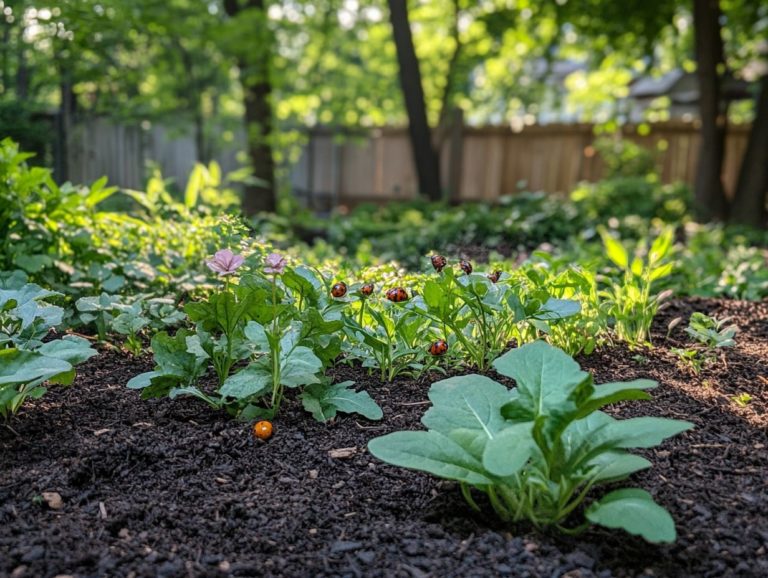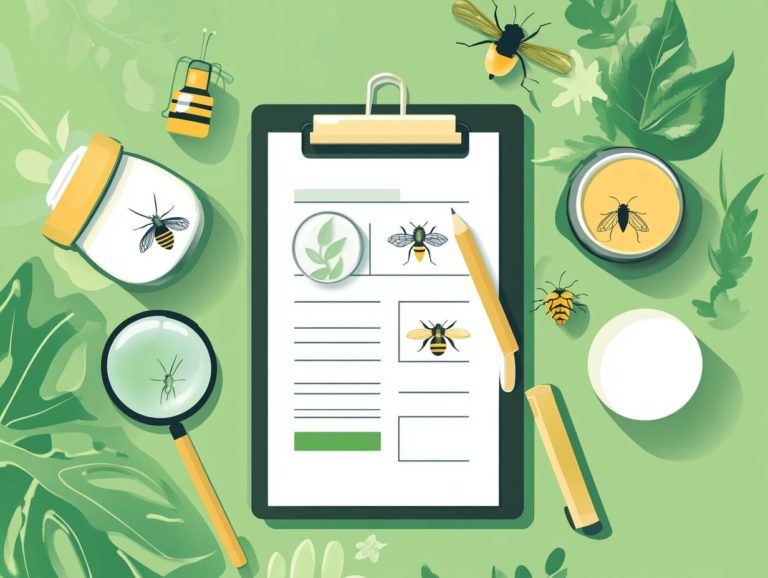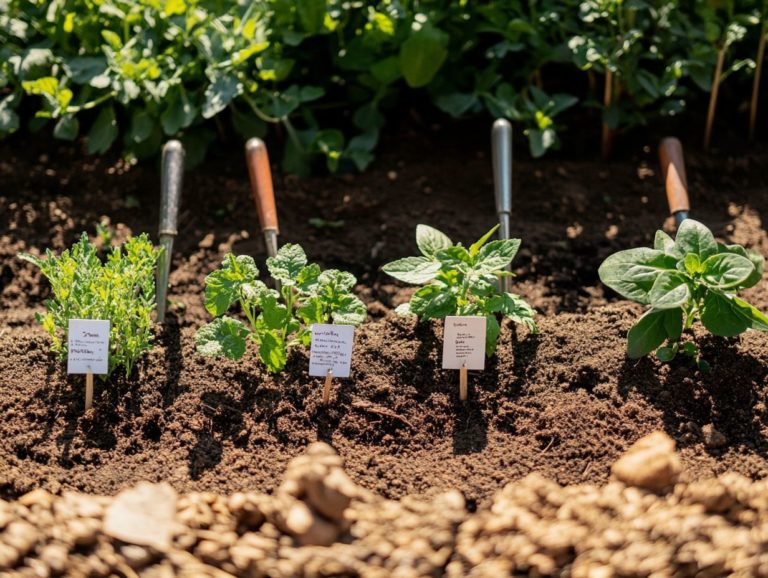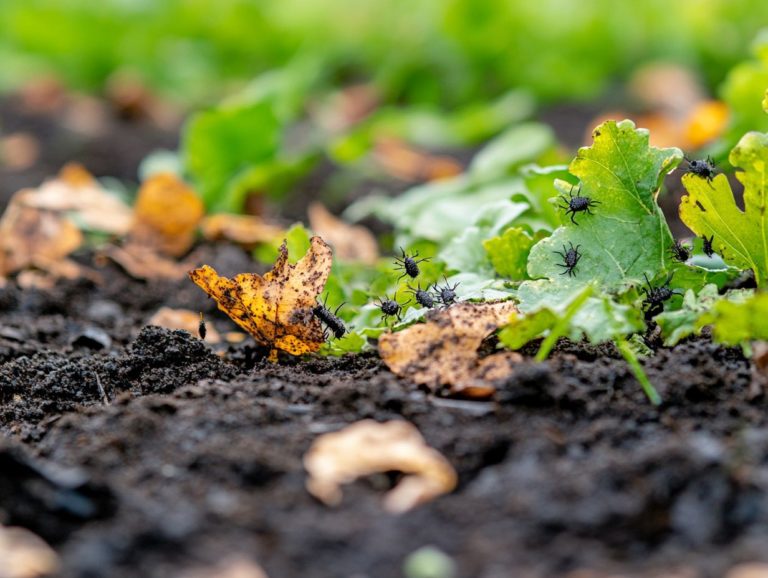Creating an Integrated Pest Management (IPM) Plan
Integrated Pest Management (IPM) represents a strategic approach that effectively combines various management practices to control pest populations while protecting people and nature, highlighting the importance of pesticide environmental stewardship.
Discover how to create an impactful IPM plan that transforms your pest control efforts! This article guides you through essential steps, from identifying pest issues to monitoring and identifying pest populations.
Implementing IPM offers many advantages, such as helping the environment and enhancing health benefits. It also addresses common challenges and provides practical solutions to ensure your pest management efforts succeed, especially in agricultural settings.
Whether you’re a homeowner, farmer, or gardener, understanding the principles of IPM empowers you to cultivate a healthier ecosystem, ensuring pest-free rootstock for organic food production.
Contents
- Key Takeaways:
- What is IPM and Why is it Important?
- Steps for Creating an IPM Plan
- Benefits of Implementing an IPM Plan
- Environmental and Health Advantages
- Challenges and Solutions for IPM
- Overcoming Obstacles and Maintaining Success
- Frequently Asked Questions
- What is an IPM Plan, and why should you care?
- Why is it important to create an IPM Plan?
- Who should create an Integrated Pest Management (IPM) Plan?
- What are the key components of an Integrated Pest Management (IPM) Plan?
- How can I create an effective Integrated Pest Management (IPM) Plan?
- How can I educate others about Integrated Pest Management (IPM)?
Key Takeaways:
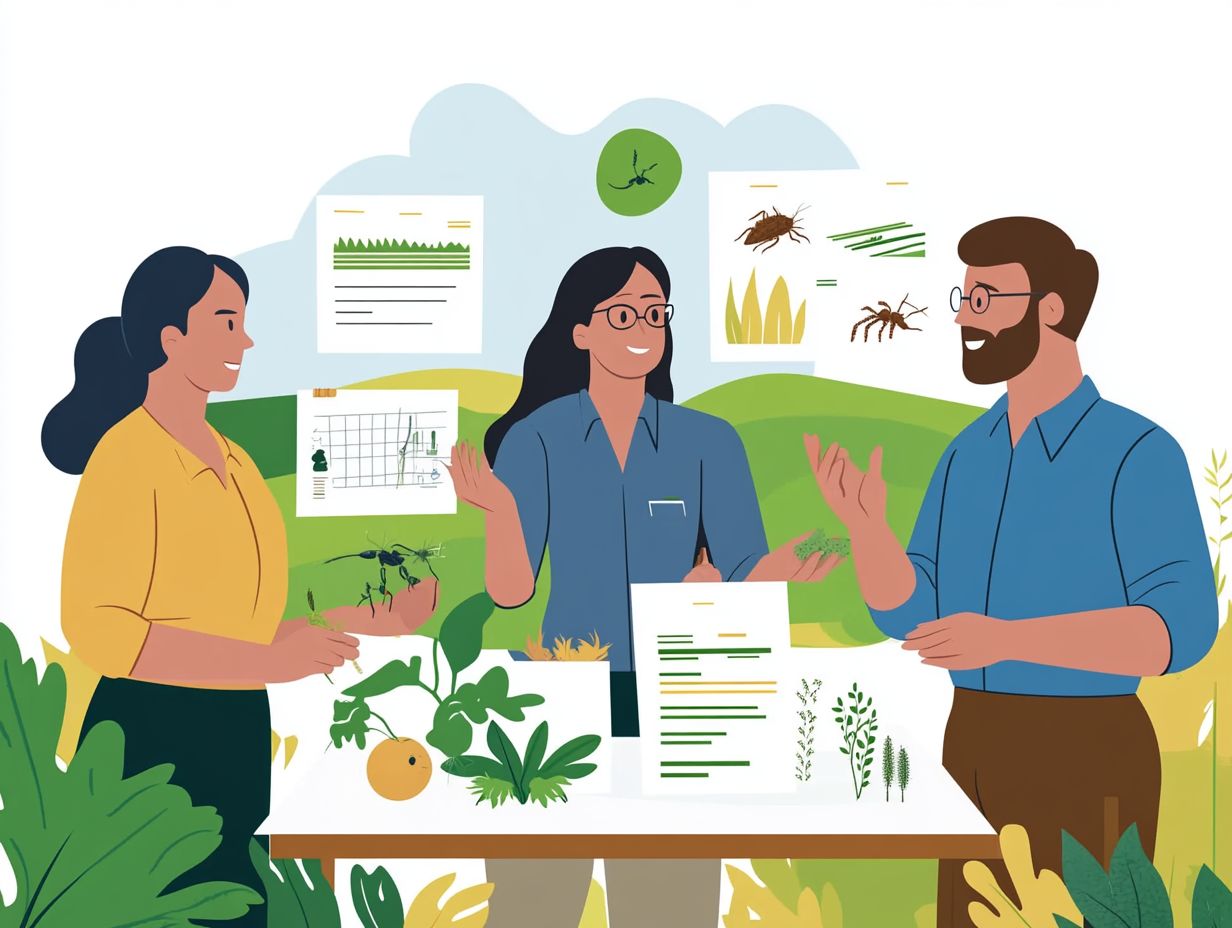
- IPM is an eco-friendly way to manage pests, keeping health and environment in mind.
- Developing an IPM plan involves monitoring pests, identifying pest problems, setting action thresholds, implementing control methods, and regularly evaluating the plan’s effectiveness.
- Implementing an IPM plan provides benefits like reduced environmental and health risks and improved pest control methods.
What is IPM and Why is it Important?
Integrated Pest Management (IPM) is an effective approach to pest control that blends various management tactics to reduce pest populations while prioritizing agricultural sustainability and environmental responsibility, supported by Master Gardener programs.
Embracing IPM is essential as it addresses pest infestations and considers the financial limits for pest damage. Here are some effective prevention methods:
- Crop rotation
- Selecting pest-resistant varieties
- Incorporating beneficial organisms
These methods help create a balanced ecosystem in agricultural settings. This strategy allows effective pest management without relying solely on pesticides, fostering healthier farming practices and protecting our environment, while utilizing biopesticides when applicable.
Steps for Creating an IPM Plan
Follow these clear steps to craft an effective Integrated Pest Management (IPM) plan. This includes diligent monitoring and identification of pests, establishing action thresholds, and implementing targeted control methods, such as using less risky controls.
Recognizing the role of Master Gardeners is important, as they educate and guide these practices, ensuring that your approach is well-informed and effective. They also provide insights on effective controls.
1. Identify Pest Problems
The first step in crafting your IPM plan is to accurately identify pest problems, which involves understanding the pest’s life cycle. This involves keeping a close eye on pest activity and assessing their populations and the potential damage they could inflict on your crops, including identifying any pest infestations.
By understanding the specific pests that threaten your agricultural landscapes, you can implement tailored strategies that effectively mitigate pest damage. Accurate pest identification is crucial for determining the most effective management tactics and setting appropriate action thresholds for successful pest control, including recognizing the economic threat posed by various pests.
Visual inspections are fundamental to this process. They allow you to spot signs of infestation like damaged foliage or the presence of insects early on. Thus, monitoring the environment becomes vital. You might also consider strategically placing traps around your fields to capture and monitor pest populations, giving you valuable insights into their activity levels.
Understanding the life cycles of these pests will inform you about peak infestation times, enabling you to execute targeted interventions based on the pest population dynamics. This comprehensive approach not only helps minimize crop yield loss but also promotes sustainable agricultural practices that will benefit the environment for years to come, thus enhancing the viability of IPM-grown foods.
2. Set Action Thresholds
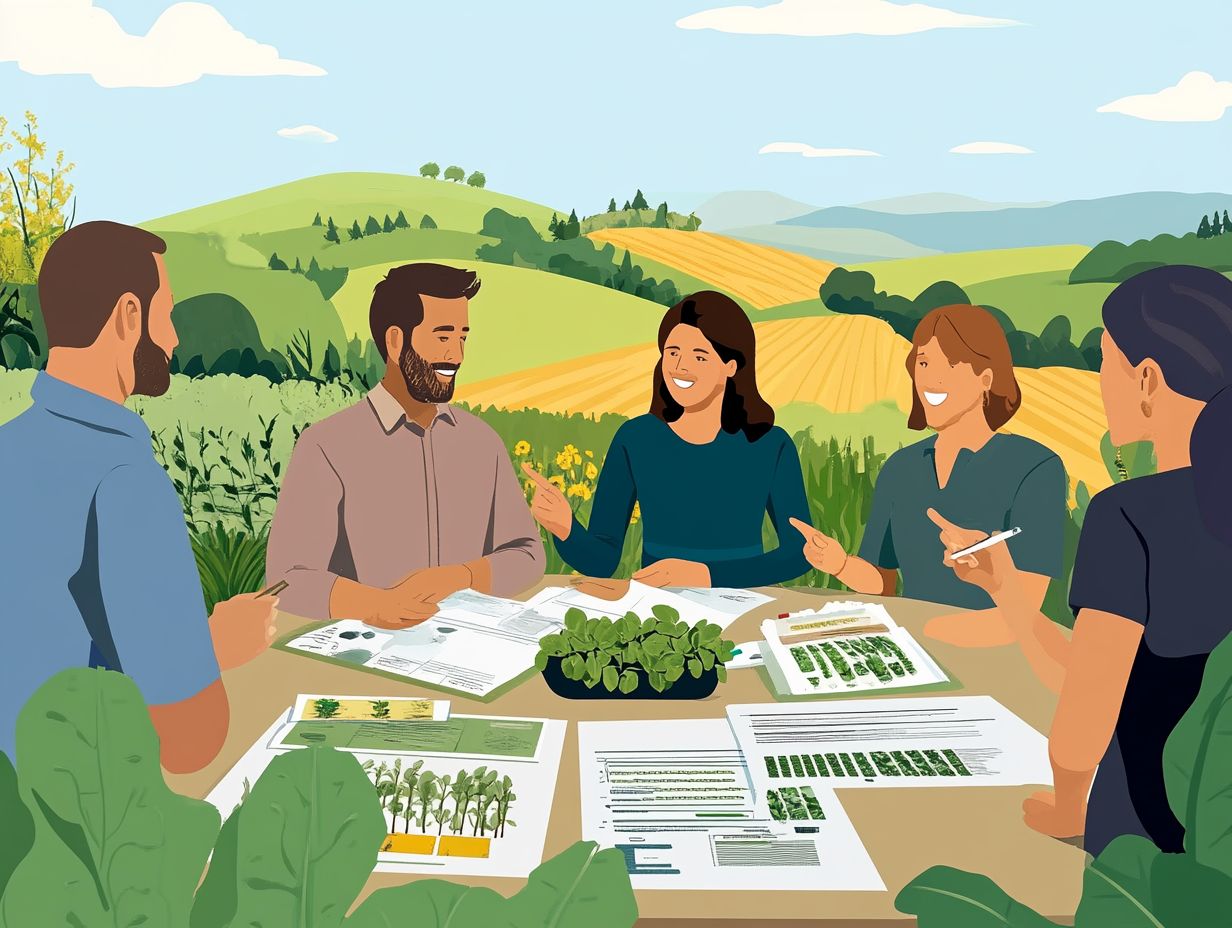
Setting action thresholds is essential in IPM, as it defines the pest population levels that require control measures to avert economic damage. This ensures that you remain within the economic threshold for effective management.
The action threshold represents the point at which the advantages of implementing control measures surpass the associated costs. The economic threshold denotes the pest density that could lead to unacceptable financial losses if left unchecked, guiding your pest control action.
For example, if a particular crop can withstand 10 aphids per plant without suffering significant yield loss, but the cost of treatment exceeds the potential revenue lost from damage caused by 15 aphids, then that becomes the economic threshold.
Act quickly by applying these thresholds to ensure effective interventions, allowing for efficient resource allocation and the maintenance of crop health. This ensures that your pest management evaluations remain accurate.
3. Control Methods
Finding the right control methods is vital for your success! You need to choose between biological pesticides and other options available. This approach allows you to implement less risky controls tailored to the unique pest challenges you face.
Your options may include a blend of biological pesticides, targeted spraying, and beneficial organisms helpful insects that can control pest populations while minimizing negative environmental impacts. This fosters consumer choice in organic products.
By carefully evaluating different pest management options, you can identify the most effective solutions for your specific situation. Each method has its own set of advantages and challenges, including considerations for pest management decisions based on data.
For example, while biological pesticides can be highly effective and kind to the environment, their slower action may require you to exercise patience and timing for successful pest control. On the other hand, chemical controls often deliver immediate results but can contribute to resistance issues, which is a critical consideration in pest management evaluations.
A prime example is the use of lady beetles in cotton fields, which have shown significant reductions in aphid populations without the adverse effects linked to broad-spectrum insecticides. This demonstrates the effectiveness of IPM practices in action.
Continuous evaluations of your pest management practices will empower you to refine your strategies. This keeps you responsive to evolving pest challenges and ensures the health of your crops remains a top priority.
4. Monitor and Evaluate
Monitoring and evaluating control measures is essential in Integrated Pest Management (IPM). It helps you assess how effectively your strategies reduce pest populations and prevent damage.
Continuously monitoring environmental conditions allows you to adapt your pest management tactics. This ensures your pest control efforts are effective.
Using various data collection methods like traps and field scouting provides critical insights into pest populations. This data supports your long-term pest management strategies.
Advanced analytical tools help you interpret complex data sets. They also allow you to identify trends that might influence future pest outbreaks.
5. Record Keeping and Communication
Effective record-keeping and communication are vital for a successful IPM plan. They help you track pest occurrences and treatments.
Maintaining detailed records allows you to analyze trends over time. This insight helps refine your pest management strategies.
Clear communication with stakeholders enhances understanding and builds trust in your IPM practices. This is crucial for consumer choice and pesticide use.
Documenting your pest management activities creates a reliable reference for decision-making. It also provides insights to stakeholders focused on agricultural sustainability.
Transparent dialogue about your pest control methods influences consumer choices. Many consumers are interested in sustainable practices and IPM-grown foods.
Benefits of Implementing an IPM Plan
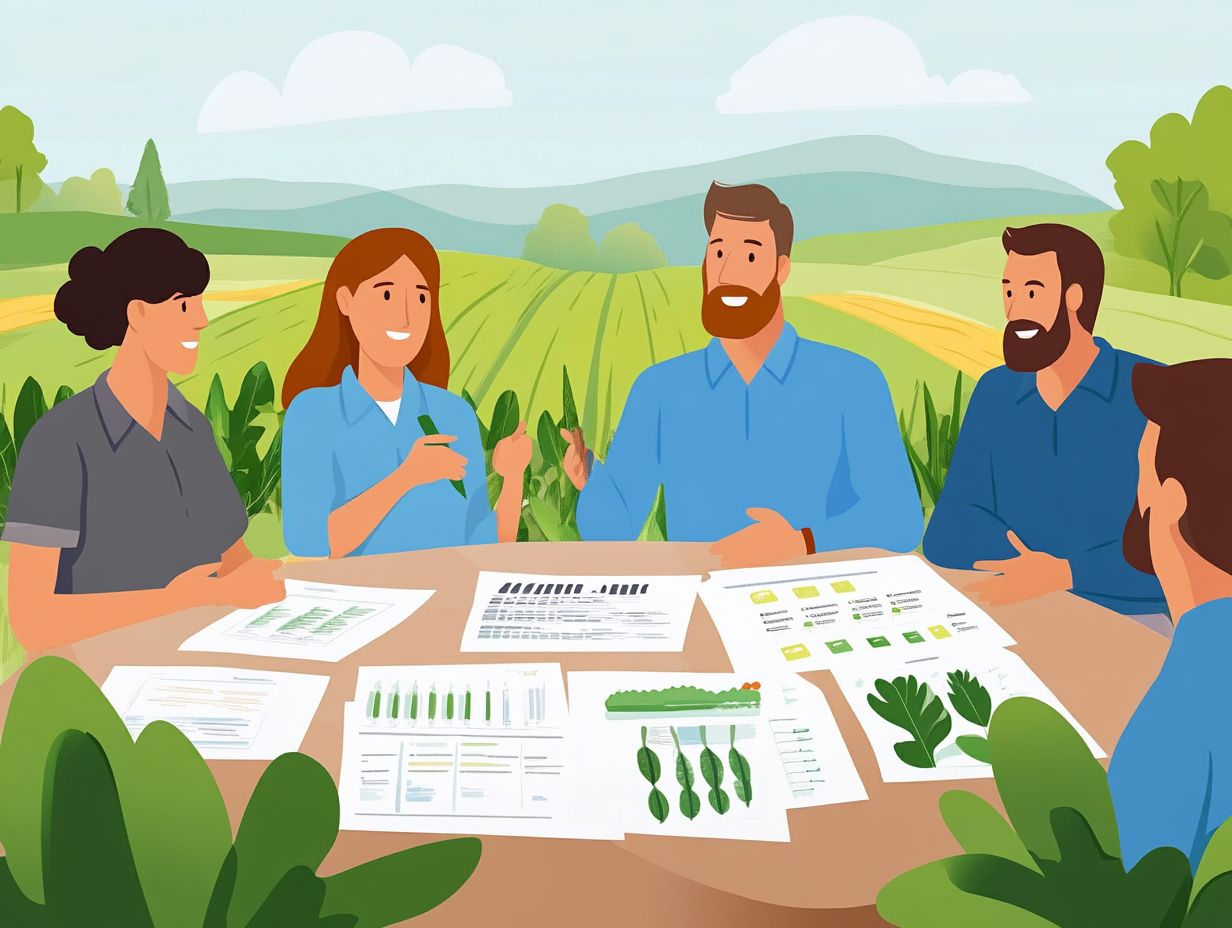
Implementing an Integrated Pest Management (IPM) plan offers many benefits. It enhances environmental health, boosts crop yields, and ensures pest-free rootstock for organic food production.
By embracing various pest management strategies, IPM promotes ecological balance and reduces reliance on harmful pesticides. This builds consumer confidence in food safety.
These practices support sustainable agriculture by emphasizing environmental stewardship and promoting health advantages.
Environmental and Health Advantages
Integrated Pest Management, or IPM, offers incredible environmental and health benefits. It focuses on being eco-friendly and uses natural pesticides made from living organisms to lower health risks linked to chemical exposure. By reducing reliance on chemical pesticides, IPM enhances the quality of ecosystems around agricultural areas, particularly in sensitive locations like healthcare facilities.
Natural pest control is exemplified by beneficial insects like ladybugs and lacewings, which help manage aphid populations without synthetic chemicals. Biopesticides, such as neem oil and Bacillus thuringiensis, provide effective alternatives with much lower risks to human health and non-target organisms.
By emphasizing environmental stewardship through IPM, you protect ecosystems and play a crucial role in preserving public health. This approach minimizes chemical runoff into water supplies and promotes biodiversity and pest-resistant varieties, leading to more resilient agricultural systems.
Challenges and Solutions for IPM
While Integrated Pest Management, or IPM, offers many advantages, it also presents challenges that agricultural growers must navigate for effective pest control and management, especially in monitoring pests.
Challenges may include economic threats from pest infestations, the complexities of implementing various pest management evaluations, and the need for ongoing strategy adaptation. Recognizing these hurdles and crafting innovative solutions, such as developing IPM programs, can significantly improve the effectiveness of your pest management practices.
Overcoming Obstacles and Maintaining Success
Overcoming obstacles in Integrated Pest Management, or IPM, is essential for your long-term success. Stay adaptable and well-informed about evolving pest pressures and management options. By continuously updating your knowledge and incorporating innovative strategies, you can effectively tackle the challenges posed by pest populations and ensure sustainable pest management.
You can also participate in workshops or training sessions that highlight the latest research and technological advancements. Collaborating with agricultural experts and extension services provides invaluable insights into best practices and emerging threats, fostering a rich community of learning.
Embrace these strategies, including the use of prevention methods and action thresholds. Regularly assess your pest management practices, remain flexible in adapting to new information, and cultivate an environment prioritizing continuous improvement in IPM.
Frequently Asked Questions
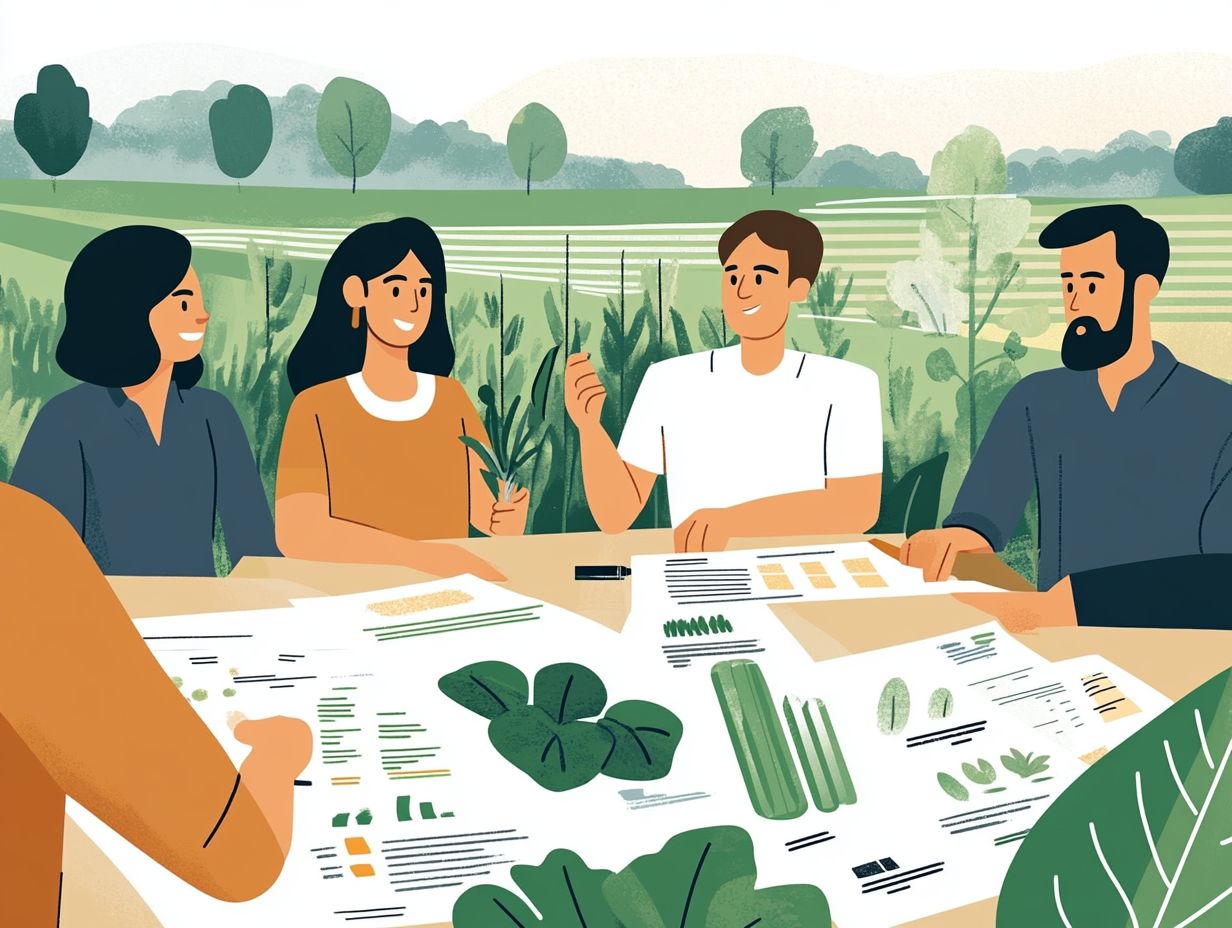
What is an IPM Plan, and why should you care?
An Integrated Pest Management (IPM) Plan is a comprehensive approach to managing and controlling pests in an environmentally responsible and effective manner. It involves using a variety of methods, such as crop rotation and targeted spraying, to prevent and manage pest infestations without solely relying on chemical pesticides.
Why is it important to create an IPM Plan?
Creating an IPM Plan is important because it can greatly reduce the risks and negative effects of pesticide use on the environment, human health, and non-target organisms. It helps prevent pest resistance to pesticides and promotes long-term pest management solutions based on effective controls.
Who should create an Integrated Pest Management (IPM) Plan?
Individuals or organizations responsible for managing pests, such as homeowners, farmers, or property managers, should create an IPM Plan. It’s crucial for everyone involved to understand and participate in developing and implementing the plan.
Use resources from organizations like the United States Department of Agriculture and EPA to guide your efforts.
What are the key components of an Integrated Pest Management (IPM) Plan?
The main parts of an IPM Plan are identifying and monitoring pests, setting action thresholds, and taking preventive measures. Action thresholds are specific pest population levels that trigger a management response.
Use non-chemical methods first and reserve chemical control for emergencies. Continuous evaluation and adjustment of the plan are vital based on the results you see. Focus on making smart pest management decisions that protect your environment.
How can I create an effective Integrated Pest Management (IPM) Plan?
Start by pinpointing specific pest problems and risks in your area. Combine preventive steps, like sanitation, with non-chemical controls, such as traps or biological methods.
Only use chemical controls as a last resort after considering their potential risks and impacts.
How can I educate others about Integrated Pest Management (IPM)?
Share information about the benefits of IPM to help others understand its importance. Lead by example and show how your IPM Plan works successfully.
Participate in community workshops or events to raise awareness and promote the adoption of IPM practices.


